Military cemeteries
14-18
Alsace - Vosges
Eternal memories
fallen heroes
The military cemeteries of the Alsace and Vosges regions bear witness to the tormented history and sacrifices made during the conflicts of the past. These places of remembrance contain the graves of soldiers of all nationalities who lost their lives in battle.
These necropolises are meticulously maintained and offer a place of meditation, where you can pay your respects to the fallen.
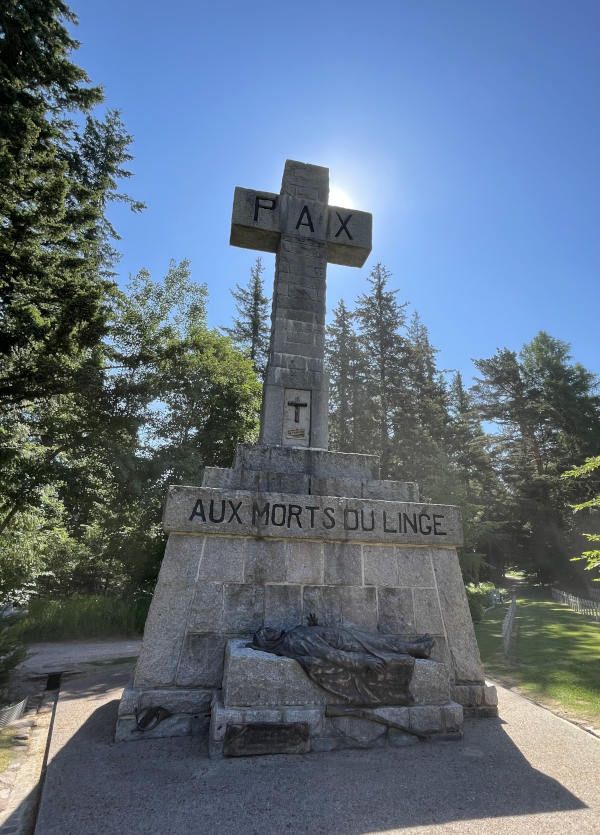
The Col de Wettstein national necropolis
-
Orbey
The Col de Wettstein national necropolis, located near the Col du Linge in Haute-Alsace, is home to the remains of French soldiers who fell in the fierce fighting of the First World War. It brings together bodies from the Lingekopf, Barenkopf, Schartzmännele and Fecht valley sectors. With 3,535 French soldiers buried, some of them in two ossuaries, this necropolis is particularly dedicated to the alpine chasseurs. A commemorative monument, depicting an Alpine hunter and bearing the word "PAX" (Peace), has been erected in their honor. The families of the missing soldiers have also affixed commemorative plaques to the walls of the ossuaries.
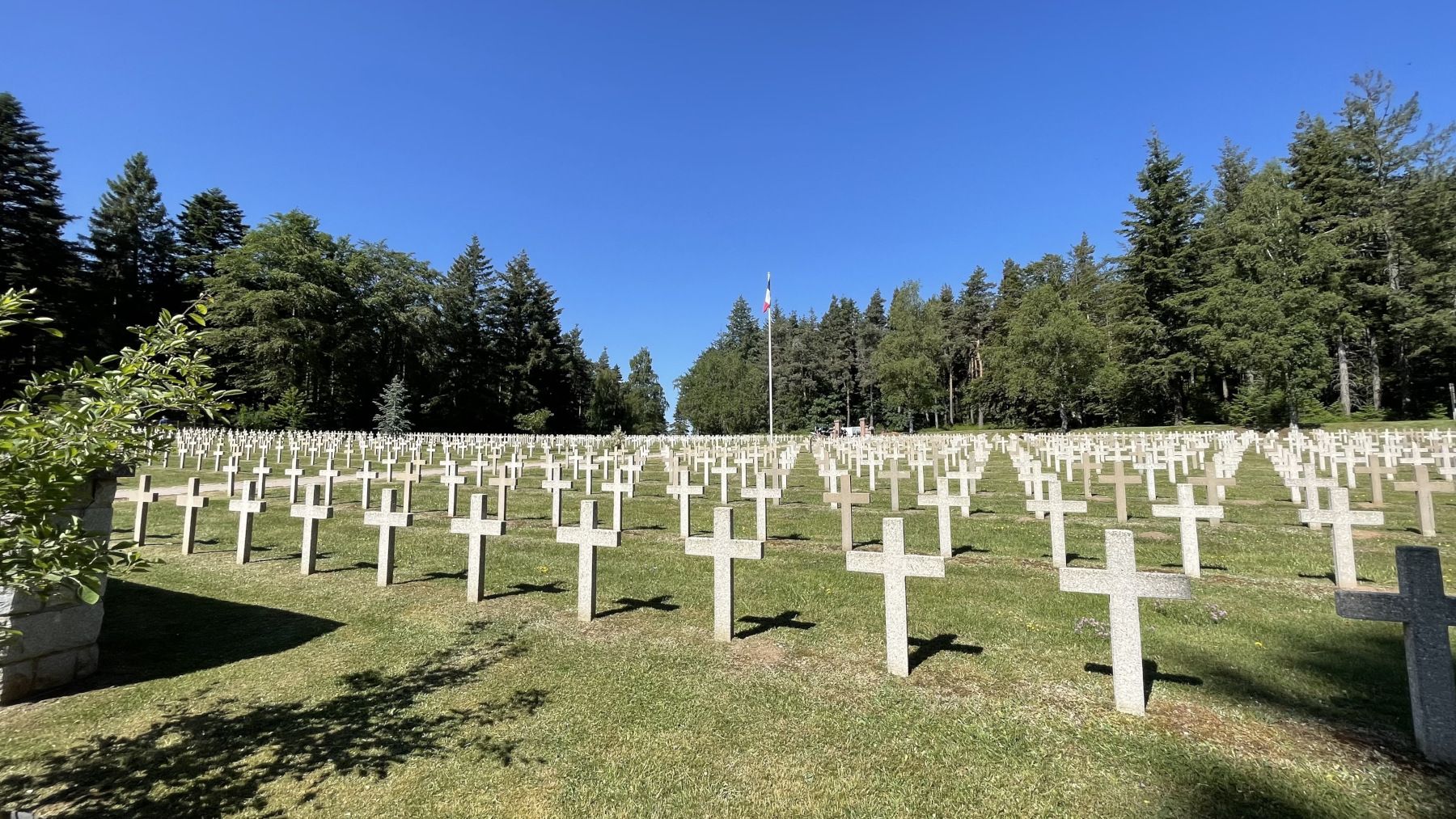

German military cemetery
of Hohrod-Baerenstall
-
Orbey
The Linge German Cemetery, located at Bärenstall near the Linge Pass, is the resting place of 2,460 German soldiers who fell in the fighting at Tête des Faux and Linge. Today, it is known as Hohrod-Bärenstall. The graves are divided into four geometric sections and include 1,518 individual graves, 40 of which are unknown, as well as a monumental ossuary housing 942 bodies, 516 of which are unknown.
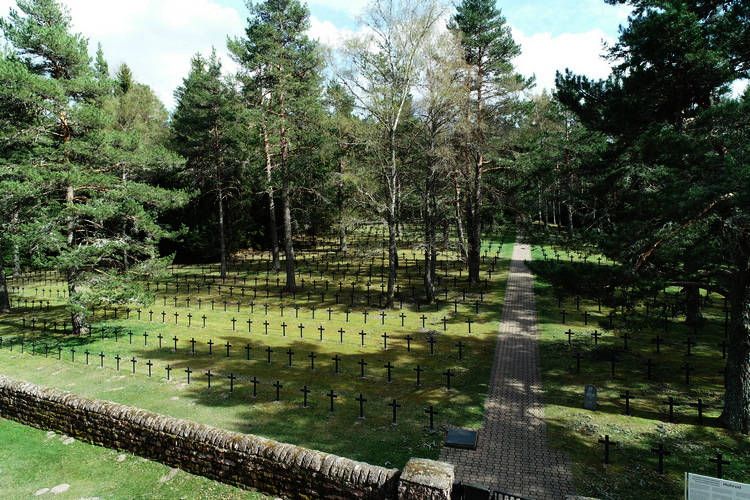
Duchesne Cemetery
-
Orbey
The Duchesne cemetery, located on the site of the French rear camp, contains the graves of 408 French soldiers, 116 of whom lie in an ossuary. Created in 1924, the cemetery is accompanied by a memorial dedicated to the soldiers of the 14th BCA and to Major J. Duchesne, who died during the assault on Grimaude in December 1914. Since that assault, the French Chasseurs maintained control of 95% of the summit of the Tête des Faux until the end of the war. Both the cemetery and the summit of Tête des Faux have been classified as historic monuments since 1921.
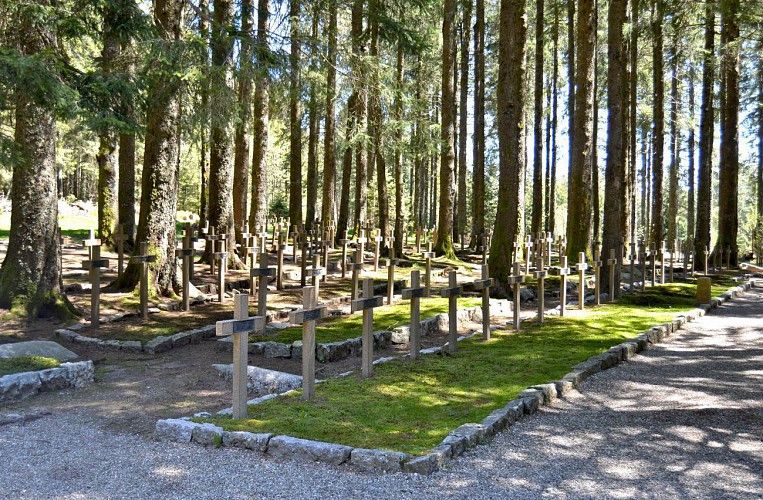
Credit Office de tourisme Vallée de Kaysersberg
French national necropolis
du Silberloch
-
Wattwiller / Hartmannswillerkopf
This important site of remembrance in Alsace includes a national necropolis and a memorial distinct from other religious monuments. The necropolis is home to 1,640 French soldiers, some of whom lie in six granite-lined ossuaries. The cemetery is laid out geometrically, with individual graves arranged in four sections forming a Latin cross, and offers panoramic views over the battlefield. The crypt contains an ossuary for unknown soldiers, covered with a shield of the fatherland, and three altars dedicated to the Catholic, Protestant and Jewish faiths add an ecumenical dimension to this place of commemoration.
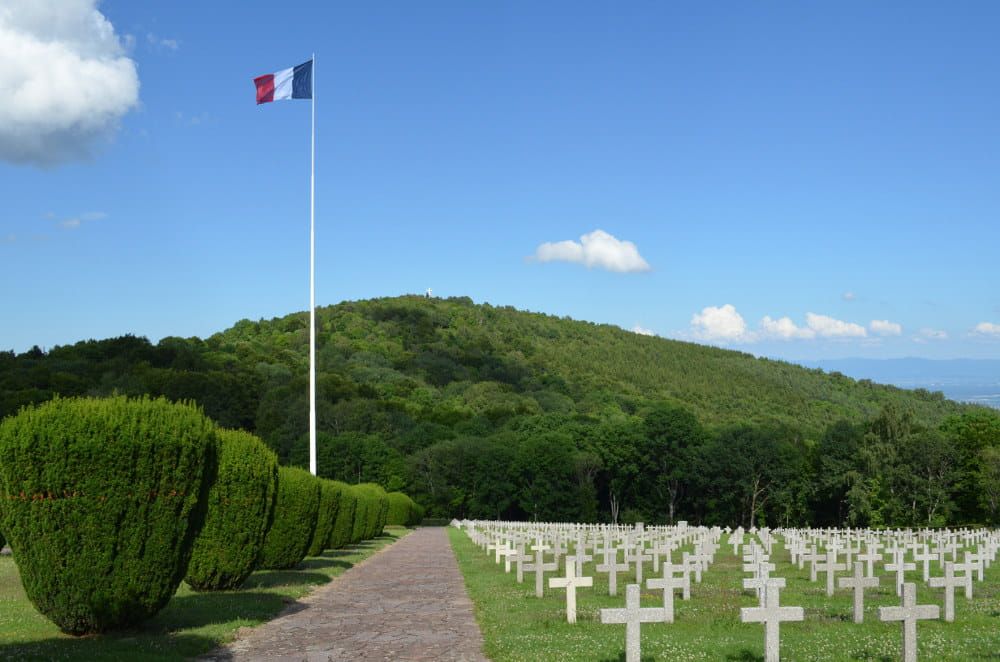
Crédit Visit Alsace - JL Depal
National necropolis
de Cernay
-
Cernay
The Cernay national necropolis is a resting place for soldiers who fell in the battles of Vieil-Armand and Steinbach in the summer of 1914. Created in 1920, it brings together bodies exhumed from temporary military cemeteries in the region. After the Second World War, the necropolis was reorganized to accommodate the bodies of French soldiers who died between 1940 and 1945. In total, it houses the bodies of 2,238 French soldiers, as well as Czech, Russian, British and Serbian combatants. Two ossuaries contain the remains of 938 combatants.
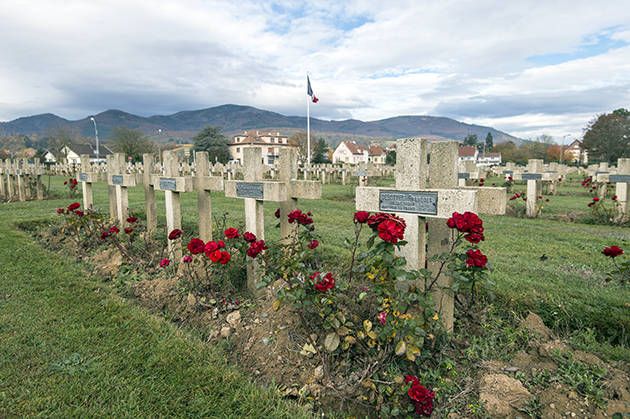
Chemins de Mémoire credit - @ECPAD
Altkirch national necropolis
-
Altkirch
The Altkirch national necropolis is a burial ground for French soldiers who died during the Alsace offensive in August 1914 and the French campaign in June 1940. Created in 1920 to bring together the scattered graves in the Belfort-Altkirch region and south-east of Mulhouse, it remained in use until 1935. Covering an area of 5,153 m², the cemetery contains the remains of 1,734 French soldiers, including 139 in two ossuaries, as well as the remains of 36 French servicemen from 1940. Among them is Émile Hayem, an industrialist and military writer.
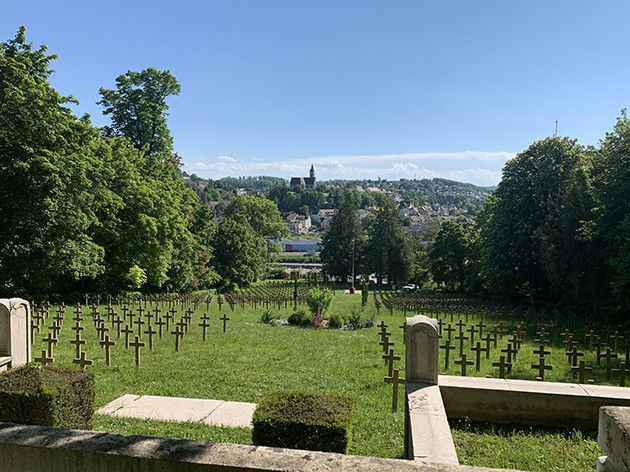
Chemins de Mémoire credit - @Guillaume Pichard
Waldmatt National Necropolis
-
Guebwiller
The Waldmatt National Cemetery, created during the First World War by the German army, is home to the remains of soldiers who died in the Battle of Haute-Alsace in August 1914 and in subsequent fighting up to 1918. It was redeveloped in 1921 and 1924 to accommodate additional bodies from nearby military cemeteries. This necropolis contains the remains of 442 French soldiers, 162 of them in two ossuaries, as well as those of 9 Russian soldiers from the First World War, 6 French soldiers from the Second World War and one French soldier from the Algerian War. The adjacent German cemetery houses 1,238 bodies.
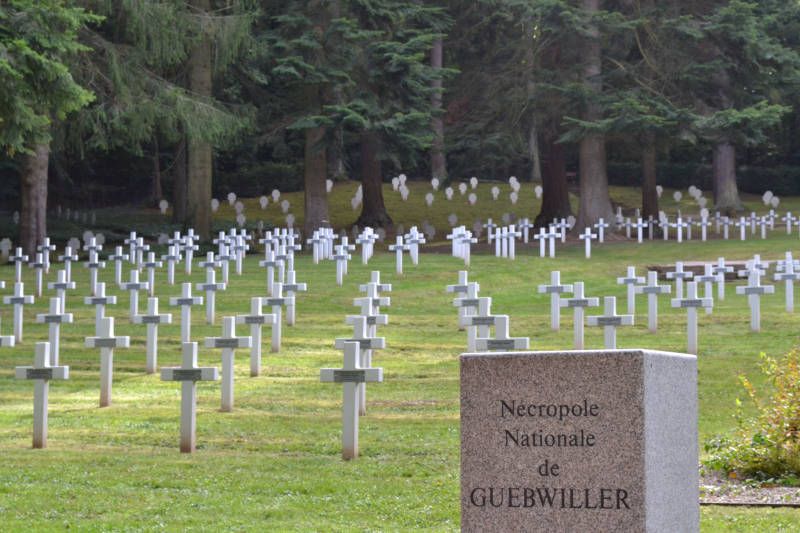
Crédit Charrin 14-18
The national necropolis
at Dannemarie
-
Dannemarie
The Dannemarie national necropolis brings together the soldiers who died in the Battle of the Borders in 1914, and the wounded who were cared for in the Dannemarie ambulances. Built between 1922 and 1924, it contains almost 400 graves, including 139 in two ossuaries. A soldier from the Second World War is also buried here. Among the combatants, brothers Antoine and Pierre Gillot lie in the same grave, Antoine being one of the first French soldiers to die in 1939. A monument to the dead stands at the entrance to the necropolis.
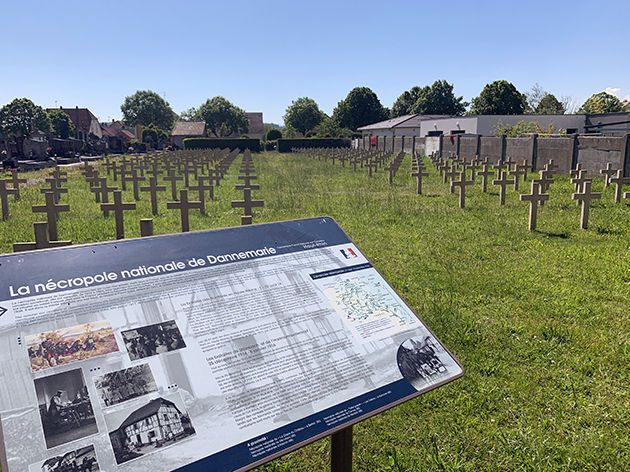
Chemins de Mémoire credit - @Guillaume Pichard
Traces d'Histoires
The Trace d'Histoire network brings together 11 emblematic sites in Alsace and the Vosges that bear witness to past conflicts. These areas steeped in history recall the events that shaped the region, leaving a deep imprint on landscapes and spirits. Alsace Destination Tourisme supports this initiative, which aims to promote remembrance tourism and convey a message of peace, hope and humanity. These sites invite visitors to reflect on the lessons of the past and promote tolerance and reconciliation.
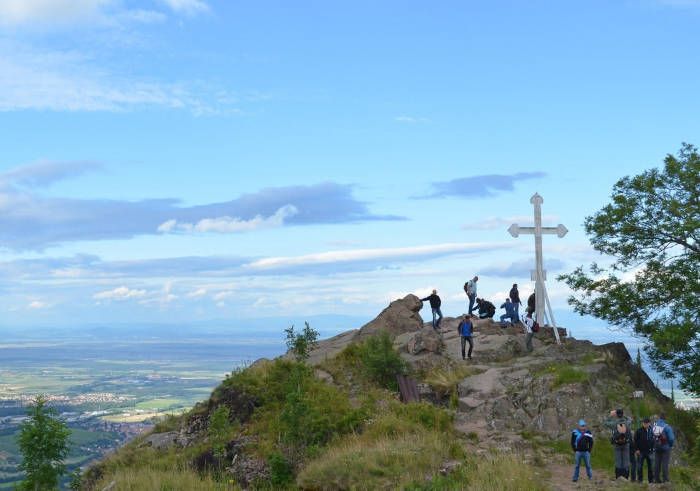
Credit VisitAlsace - @JL Depal

